Ford's Hackett: 'Dumb Cars' Will Be a Thing of the Past
“Ford’s future is not about giving up the car,” Jim Hackett, Ford chief executive officer, exclaimed at the Michigan CEO Summit in Detroit on Thursday. But he promises there will be “no dumb cars in the future.”
The executive was not assuring attendees that Ford has no plans to revive the Mustang II, rather, he was talking about the brand’s continued efforts to press onward into the development of electric, connected, and self-driving automobiles on a global scale. With Wall Street still fixated on tech, it would be surprising to hear any automotive executive say otherwise.
Is Human Involvement a Liability When It Comes to Autonomous Driving?
Commuting is awful. Unless you’re fortunate enough to have spartanly populated backroads between you and the office, that drive to work can be excruciatingly dull — with the only excitement coming from near misses and whatever terrible jokes drive-time radio offers up during that hour. When you get right down to it, most daily commutes are little more than unpleasant ways to add miles onto the odometer.
Of course, with the promise of autonomous driving, that experience is supposed to transform into a worry-free jaunt. But there’s a problem. Most self-driving systems of the near future will require operators to pay roughly the same amount of attention they do now. After all, if your car miscalculates a situation, you’ll want to be ready to take over the instant something seems awry. If that’s the direction we’re heading with this technology, I’m starting to think it might just be easier to automate all of our jobs instead of the the method we use to get to them.
However, at least one self-driving firm has abandoned the development of features that would require human intervention — leaving the car to make up its own mind in an emergency situation.
Everyone Is Working on Non-pneumatic Rubber for Your Future Car
Airless tires are one of those things that crop up every few years, but they never seem to stick around long enough to become commonplace. Already, certain construction vehicles use flat-proof rubber, and tire manufacturers have been playing with airless systems for some time. For example, Hankook has the iFlex, its fifth attempt at non-pneumatic tires, and Goodyear has actually begun selling airless donuts on commercial lawnmowers. Michelin even has a 3D-printed round that it claims will last the lifetime of a vehicle.
Unfortunately, nobody seems able to come up with a solution that works at higher speeds. While they’re great at taking impacts, the existing designs aren’t so good at coping with high levels of heat. But it’s not for a lack of trying — there may even be a breakthrough just around the bend, especially since everyone seems so interested. Rolling resistance and weight are two of the electric car’s worst enemies. If an automaker could mitigate those issues effectively, that would be another leg up on the competition.
It’s an issue weighing heavy on the top minds at Toyota at the moment. The company’s recent concept EV, the Fine-Comfort Ride, came equipped with a set of experimental airless tires from Sumitomo Rubber Industries, boringly named the Smart Tyre Concept-A. Toyota’s theory is that non-pneumatic tires, consisting of a solid band of rubber encircling lightweight alloys, could eventually compensate for the weight of wheel-mounted electric motors.
Self-driving Cars Head to Michigan For Winter Testing
There’s something we don’t often hear about when companies discuss the glory of the autonomous car: the lack of functionality of specific hardware during inclement weather.
Camera systems can be rendered ineffective when covered with ice and snow cover of an inch or more can easily obscure lane markings, leaving self-driving cars at a serious disadvantage. LiDAR, which operates using light beams, can be severely thrown in fog or whiteout conditions. Even if a blizzard doesn’t knock out the vehicle’s sensor array, its computer will still have to know how to mitigate slippery road surfaces.
Whether you’re human or machine, winter driving is extremely taxing. But technology companies hoping to build a self-driving car eventually have to move into snowy regions to advance testing. Some of the bigger automakers already have. Ford, for example, has begun extensive regional mapping — hoping to give cars handicapped by poor visibility a leg up.
Waymo has also decided it’s time to throw on a parka and winter tires. It’s heading to Michigan to start cold-weather testing next week.
Subaru's Brace of New Test Tracks Hints at Options to Come
The company formerly known as Fuji Heavy Industries is again investing in its safety-related R&D, creating additions to its Bifuka Proving Grounds in Japan. Bifuka is fun to say.
Dubbed the “Advanced Driver Assist Technologies Tracks,” the newest testing sites are said to have been built with the express purpose of developing advanced driver aids. If all of this sounds like future planning for testing autonomous driving solutions, you’re probably not too far off.
If You're Wondering Why Automakers Can't Stop Talking About Mobility, Wonder No More
“Mobility” is easily the most overused term in today’s automotive vernacular. Despite being incredibly nonspecific, executives can’t help but make it the bookend of most speeches involving long-term goals and production stratagems. But why?
The term itself pertains more to the industry itself than the specific products it’s developing. While “mobility” can be applied to any conveyance with a technological bent, the word also represents a company’s ability to move into other areas of business. And that’s what gets the investors and market analysts tugging at their collective collar, damp across the brow, so red hot they can’t help but raise the stock valuation of any company that seems poised to make a big move.
Tesla’s entry as novel manufacturer with a unique product was enough to send its share price through the roof, and established automakers took notice. Despite Mark Fields’ best attempt to rebrand Ford as a tech company, he couldn’t bottle that same lightning and paid the ultimate price — getting fired. However, General Motors may be succeeding where Ford initially failed. The proof of the pudding is how high its share prices continue to climb.
Toyota Sticks With Hydrogen for 'Fine-Comfort Ride' Concept Vehicle
Still glued to hydrogen as the fuel of the future, Toyota will unveil a new fuel cell concept at the Tokyo Motor Show that could be summarized as a mobile lounge. Existing somewhere between a crossover and minivan, the “Fine Comfort-Ride” concept vehicle underscores a more roomy and relaxing automotive future.
At 190 inches long and 77 inches wide, it isn’t a petite transport. However, that mass translates into a spacious cabin — with ample room for six — affixed with all the luxuries you’d want to see in the car of tomorrow. It has lavish swivel chairs, mood lighting, connectivity for each passenger, and windows that double as infotainment screens.
Unfortunately, it has the face of Droopy Dog. This may be the first time an automaker has molded a vehicle’s bodywork into jowls.
Polestar 1: It's Here, It's Real, and It's Not a Volvo
There’s something missing from the efficiently named Polestar 1, the first production vehicle unveiled by the world’s newest car brand: a Volvo badge.
Anyone who’s ever seen Volvo’s 2013 Concept Coupe will surely recognize the similarities between the two vehicles, but the slinky personal luxury coupe seen here is the one you’ll actually see plying a roadway near you, if you’re so lucky. Polestar, once a performance arm of Volvo Cars but now its own standalone subsidiary, plans a range of high-end electrified performance vehicles, of which the Polestar 1 is merely the first.
Packing a 600-horsepower plug-in hybrid powertrain and a body to die for, the 2+2 grand tourer makes great use of its sister division’s architecture, all paid for by corporate overlord Geely. The obvious similarities to the Volvo S90 isn’t an accident, as a bespoke version of that model’s platform lurks beneath its curvaceous flanks. However, that isn’t to say the Polestar 1 is just a Volvo in disguise.
Toyota Debuts Concept-i Series of Electric 'Mobility Solutions'
While we enjoy a concept car that isn’t set so far into the hypothetical future that it’s almost impossible to imagine the world in which it could exist, it’s also fun to see less-than-realistic designs emerge in a vehicle that is pure science fiction. Pursuing the latter mindset, Toyota has decided to expand upon the original Concept-i car with an entire series of “mobility vehicles” — each intended to help deliver a tomorrow where you are no longer required to walk.
Now part of a full lineup of experimental vehicles, Toyota views the Concept i-Ride and Concept i-Walk as supplementary modes of transportation for last January’s original four-seat concept. That vehicle debuted as more of a robotic friend than an traditional automobile. Toyota even went so far as to propose an artificial intelligence system that allowed the i-car to build a relationship with the driver that “feels meaningful and human.”
Mazda's Rotary Engine Returns for 2019 - Just Not How You Had Hoped
Mazda never gave up on the rotary engine. Despite putting it on hiatus after the RX-8 ended production in 2012, the automaker has continued developing rotary-based solutions to achieve locomotion. There has even been a longstanding promise that a Wankel motor would eventually return in a future sports car that would trump the MX-5 in outright performance. However, Mazda never mentioned when the world could expect to see another rotary in action.
Then Mitsuo Hitomi, Mazda’s global powertrain head, gave us a timeline to sink our teeth into. The year of the Wankel will be 2019, but it’s not coming back how you imagined. Instead of dropping it into a high-revving performance vehicle, Mazda thinks a rotary would make the perfect gas-powered range extender for its upcoming electric vehicle.
GM to Patent Temporary Digital Key?
A standard part of the dealership test drive experience involves the salesperson grabbing the key to the car in question out of a lockbox, then accompanying the customer on the drive. A new patent filing suggests General Motors may be looking for a way to give customers access to the car without requiring a salesperson to dig through a box of keys.
GM appears to be working on a patent that would allow customers to have a temporary digital key granted to them in order to gain access to a vehicle they want to test drive.
The system would work like this: Interested customer applies for the key, the dealer verifies the buyer’s interest and identity, dealer approves the test drive and monitors it. If the customer doesn’t want to buy the car, the dealer can revoke the digital key authentication, and it can also do the same to a prior key holder if the vehicle is used and someone other than the first title holder buys it.
Volkswagen Dumps $1.7 Billion Into Development of Electric Buses, Commercial Trucks
Having already dropped itself into an ocean of electric car R&D, Volkswagen is now making plans to develop battery-powered commercial vehicles aimed at servicing urban areas where public officials are having night terrors about air quality.
Jürgen Stackmann, VW’s board member responsible for sales and marketing, promised the company would be at “full steam” on EV production and development by 2020. That includes a battery-only option for “all styles and body types” by 2030, according to Stackmann. But the brand wants to have something similar on the table for trucks and buses before then.
Volkswagen Truck & Bus is investing 1.4 billion euros ($1.7 billion) into new electric drivetrains for use in both medium and heavy-duty distribution transport and city buses. While that development will go toward European vehicles initially, VW and strategic partner Navistar will use the “e-drivetrain” platform on U.S.-based electric trucks from 2019 onwards.
Can Uber Survive Being Placed Under the Microscope?
Uber Technologies is about to be probed to a degree that would make even the most compliant alien abductee blush. The company is now looking at a minimum of five criminal investigations from the U.S. Justice Department regarding claims of bribes, illicit software usage, unfair marketing practices, corporate espionage, questionable pricing strategies, and theft of a competitor’s intellectual property.
The ride-hailing firm is also involved in dozens of lawsuits from from customers and employees — and one very public suit with autonomous research rival Waymo. But Uber’s skirting of the law was what made it so profitable to begin with. Its take-no-prisoners attitude may have been the thing that ultimately ousted founder and CEO Travis Kalanick and severely tarnished its corporate image, but it’s also an aspect that ensure its success. Still, nobody likes learning how the sausage is made and every look behind Uber’s curtain revealed another fresh horror the press couldn’t resist mentioning — including yours truly.
How 'Buy Here Pay Here' GPS Tracking Devices Work
GPS tracking devices are a common sight in cars sold by “Buy Here Pay Here” dealers, and some are even showing up at franchise dealers. A lot of speculation exists about how the devices work and what they can actually track, but most of it comes from third-party reports.
Working as a tracking device installer for a brief period of time gave me an inside view of that market, allowing me to share what actually goes on behind the scenes.
You Not Having a Car With 'Superpowers' is Somehow Donald Trump's Fault
Supposedly, everyone eagerly anticipates the day they can own a shiny-new self-driving car, but automakers, regulatory agencies, consumer advocates, Silicon Valley, and the White House are debating how exactly that’s supposed to happen. They haven’t reached a consensus yet — and that’s probably not likely to change anytime soon.
Most autonomous cars rely on array of cameras, LIDAR, GPS, inertial measurement devices, and complex control systems used to interpret sensory information before reacting accordingly. Vehicle-to-vehicle communication systems (V2V) are regarded by many as essential components to establishing fully automated travel. The theory is that, by allowing cars to communicate directly on a broadband frequency, they can better predict each other’s movements.
However, a recent Bloomberg article accuses the technology of “going nowhere fast,” citing the Trump administration as the chief culprit, and alluding to the direct stifling of technology that would give cars “superpowers” in the next few years.
I probably won’t have the opportunity to say this often — and it feels kind of strange to say it now — but these accusations aren’t entirely fair to the president or his administration.
BMW Executive Has Prophetic Vision of a World Without Car Keys
Way back when the sun first rose on the automobile, hand cranking was the preferred way to start an engine. Keys didn’t really come into fashion until magneto and coil-operated ignition systems were mainstreamed. But the car key has evolved since its infancy as a finely shaped lump of metal. Modern keys aren’t even keys in the traditional sense, they’re short-range radio transmitters with a transponder chip that disarms a vehicle immobiliser.
BMW is reassessing the practical value of car keys entirely, according to Ian Robertson, the company’s board member responsible for sales. Robertson, struck with the divine sight, envisions a hypothetical world where your smartphone performs double duty — eliminating the need to lug around the extra nine grams of metal associated with car keys.
Nobody Cares About or Uses the Premium Technology in High-end Luxury Cars
Fifty years ago the equipment disparity between luxury vehicles and economy cars was vast, but things are different today. With the exception of nicer materials and cutting-edge technology, you can get essentially everything you would want in a basic hatchback. We’re not talking about power windows and air conditioning either; the technological trickle-down now includes things like active safety systems, heated seats, in-car navigation, multiple driving modes, and more.
As it turns out, the great unwashed masses of today enjoy their pleb-mobiles at about the same level as affluent individuals like their own diamond-encrusted executive mobility suites. The reason? Because nobody cares about premium features they can’t figure out how to use, nor do they miss technology that isn’t part of their daily routine.
2018 Nissan Leaf - The Industry's Oldest Mainstream Electric Car Turns Over a New… Well, You Get the Idea
Back in December of 2010, if anyone can remember that hazy, long-ago time, an oddly shaped five-door rolled out of the minds of Japanese executives and onto U.S. dealer lots. Unlike its fledgling electric forebears, the 2011 Nissan Leaf promised practical gas-free transportation for the whole family, bolstered by a warranty from an established automaker and 73 miles of EPA-approved driving range.
The industry had just taken a big step. However, the Leaf, despite racking up an impressive model-life sales total, soon found itself leapfrogged by competitors with greater range and more conventional styling. By the time 2017 rolled around, the Leaf’s 107-mile range and now-dated body stood in stark contrast to sleeker models delivering 200 miles of driving from every turn at the plug.
Nissan wants to change that. For 2018, the second-generation Leaf arrives with greater — but not class-leading — range, a new body (with a familiar profile), and a lower entry price. The automaker clearly feels there’s thrifty EV buyers capable of saying “no” to the Tesla Model 3 and Chevrolet Bolt.
You Read It Here First: The Biggest Challenge to Autonomous Vehicles Is All Too Human
A bit more than six years ago, I wrote “The Blockers” for this site as a work of fiction, suggesting that there may be a bit of a popular revolt against self-driving vehicles and that it might be led by those who felt personally dehumanized as a consequence of “progress.”
Now, the nice people at MIT Technology Review have caught up to your humble author’s dystopian point of view.
Cadillac Changes Its Super Cruise Strategy, Commences Media Campaign Prior to Launch
Setbacks notwithstanding, we’ve been eagerly anticipating Cadillac’s entry into the world of semi-autonomous driving with its Super Cruise system, developed to help reinforce the automaker’s position as top-tier luxury brand. After all, vehicular opulence is now deeply embedded with technological achievement and few things shout “I’ve arrived” like a car that can chauffeur you around.
However, Cadillac is changing its implementation strategy, making Super Cruise standard on the highest trimmed CT6 — instead of leaving it as a pricy optional extra. It’s also launching an advertising campaign to whet the public’s appetite, with the first of its “Let Go” TV spots appearing on MTV’s Video Music Awards over the weekend.
Infotainment Market Will Be Worth Over $40 Billion by 2024: Report
A report by industry analysis firm Hexa Research is positing that the market for automotive infotainment systems will be worth more than $40 billion by 2024.
That’s thanks to rising consumer demand, improved technological capabilities, and improved incomes, according to the report. As it stands, the North American market accounted for a hair over 35 percent of the revenue from the infotainment industry in 2016.
Bulky A-pillars Getting in the Way? Toyota Has a Clear Solution
Back in the days of sky-high tailfins and wraparound windshields, A-pillars weren’t of sufficient thickness to hide little Timmy riding his bike, or maybe that Ford Fairlane approaching from behind that shrub to your left. No, front seat vision was grand — trying to stop your Detroit barge with unassisted drums brakes was the real challenge.
These days, the high-strength steel and airbags needed for rollover and side-impact protection have turned those slim pillars into Corinthian columns capable of hiding a small crowd. A-Pillars are bulky, and that’s a safety problem in itself.
What to do? In Toyota’s case, simply develop a way of seeing through them.
Elon Musk Presses for Total Ban on Autonomous Weapons, Self-driving (Potential) Killer Cars Still Okay
The United Nations recently voted to begin formal discussions on autonomous weapon systems, with 116 of the world’s leading robotics and artificial intelligence experts responding by calling on governments to simply ban them.
The coalition, fronted by Tesla’s Elon Musk and Alphabet’s Mustafa Suleyman, claims this is a dark road the world doesn’t want to go down. Aimed at the International Joint Conference on Artificial Intelligence, a letter from the group warned the U.N. not to usher in the “third revolution in warfare” (following gunpowder and nuclear arms).
While I’m not about to suggest there aren’t serious risks involved with weaponizing thinking machines, it does seem lightly hypocritical for Musk to condemn them over a lack of trust while continuing to champion self-driving cars. Apparently, technology experts feel a Terminator scenario is thoroughly unacceptable but a potential Maximum Overdrive situation is just fine.
Toyota's Safe-driving App Relies on Embarrassing Teenagers
Teen drivers have the highest crash rate of any demographic. Younger drivers are most likely to use their phones while driving or speed in high-traffic areas, and roughly half of all accidents associated with younger drivers were single-vehicle crashes. According to the National Center for Health Statistics, motor-vehicle crashes are the leading cause of death among individuals under 20.
Keeping younger drivers safe is a major concern for institutions like the National Safety Council, but some automakers have their own initiatives. Toyota, for example, had TeenDrive365, which provided a series of online videos aimed at encouraging safer driving habits. While the automaker abandoned that program after 2014, resulting in all of its content mysteriously vanishing, Toyota still seems keen on keeping young motorists on the road and out of the morgue.
However, what’s the best way to encourage responsible driving? Teens don’t like being placated, and they probably know the laws better than older drivers (as they’ve passed their written test far more recently). With this in mind, Toyota thinks humiliation may be the key. The automaker has made mortifying easily embarrassed teens the central theme of its new safety app.
Ford CEO Sees a Future for Hands-on Driving, but a New Patent Shows the Company Hedging Its Bets
If you believe certain segments of the media, we’ll soon be able to avoid the drudgery of turning a steering wheel, pressing and releasing pedals, and — gasp! — shifting gears.
The inevitable onset of self-driving vehicles, tech aficionados and urbanists tell us, will bring traffic fatalities down to zero, somehow remove all congestion from the road, and turn our lives into a never-ending sojourn of blissful tranquility. Never again will you take that aimless and unprogrammed late-night drive, just for the hell of it. Never again will you bother with buying and owning a car. Automakers will simply turn their driverless cars loose, emptying driveways while filling streets with hands-off ride-sharing pods.
Not so fast, says Ford’s newly minted CEO.
The 2018 Honda Accord Gets Tech the Entire Acura Brand Can't Yet Have
The Honda Accord is by no means a younger sibling, operating as the senior member of American Honda’s fleet.
More specifically, the 2018 Honda Accord will never be viewed as the little brother in the American Honda family, not with these substantial dimensions and MSRPs that reach deep into the $30Ks.
But the 10th-generation Accord is still a Honda. Just a Honda. Merely a Honda. Only a Honda. And while you might expect Honda to enjoy technological hand-me-downs from the automaker’s upmarket Acura brand, that’s not the way it works. Not when it comes to the Accord.
As a result, we’ll wait and see which hand-me-ups appear on the next all-new Acura, the third-generation 2019 Acura RDX.
Toyota's New Patent Screams 'Regulate the Manuals!'
In this day and age, when a “coupe” often means a four-door SUV and automatics, DCTs, and CVTs perform almost all gear-shifting duties, it’s nice to see a patent from a major mainstream automaker concerning a manual transmission.
However, Toyota’s recent patent for an electronic tranny nanny might spark worry that the three-pedal experience, as endangered as it is, could become watered down by technology. A manual transmission that doesn’t let you make mistakes? Who’s in charge here?
Ford's New Patent Eliminates the Remaining Reason for Opening Your Hood
It’s no secret that vehicle owners are becoming more hands-off when it comes to vehicle maintenance and repair. Some of that blame can be attributed to the increasing complexity of modern cars, and automakers are using that to their advantage as they attempt to make cars even more hands-off. The tool roll and spare tire you’d find in older cars have been replaced with a can of fix-a-flat and a roadside assistance card.
Changes like the disappearance of the spare tire are the result of chasing fuel economy standards, though others — like increased use of plastic engine covers — seem like the automaker’s way of telling owners they’ll need to subscribe to a service plan instead of trying to turn a wrench on their own. A recently published patent shows someone at Ford had the idea to take this to next level — so owners will never have to open the hood at all.
Mazda Going (Mostly) Sparkless With Skyactiv-X Gasoline Engines, Starting in 2019
There’ll still be spark ignition available, but Mazda doesn’t expect you’ll get a whole lot of use out of it. With its just-revealed Skyactiv-X engine technology, the gasoline-loving automaker has added a new way of making power to the automotive realm: the compression ignition gas engine.
It’s something we’ve known about for a while, but today saw its confirmation. Mazda’s Skyactiv-X engine, bound for its vehicle lineup in 2019, adopts technology forever associated with diesel engines and combines it with a lighter, much cleaner fuel. Apparently, going green needn’t require batteries and AC motors.
Nissan Improves GM's Rear Seat Reminder, Takes Credit for the Initial Idea
Nissan is rolling out a safety feature called Rear Door Alert on the 2018 Pathfinder SUV. It’s aimed at preventing drivers from accidentally leaving items in the backseat on a hot day — important things like groceries, children, and dogs. While the automaker bills the feature as the “first-of-its-kind,” it’s essentially an improved version of General Motors’ Rear Seat Reminder.
According to Nissan, Rear Door Alert was developed by two engineers who also happen to be mothers. Elsa Foley is an industrial engineer and mother of two, while Marlene Mendoza is a mechanical engineer with three kids of her own. They were allegedly struck with the idea when Mendoza abandoned a pan of lasagna in her car, which made the interior reek of pasta — hitting home the point that this system was definitely not inspired by another automaker.
With the Model 3 Out of the Bag, Tesla Investors Worry (While Musk Won't Stop Talking About 'Hell')
The production Tesla Model 3, revealed in full at a Friday evening handover ceremony, is an impressive vehicle, but it’s also the California automaker’s most important vehicle. With 220 miles of range in stripped-down base trim, or 310 miles for the starting sum of $44,ooo (the only version available at launch), the curvaceous sedan has no shortage of fans. It’s also facing no shortage of threats.
The company’s future as a mass-market “disruptor” of the American automotive landscape hinges on the Model 3’s trouble-free production at Tesla’s Fremont assembly plant, as well as timely deliveries to the half-million reservation holders. Unforeseen quality issues, a breakdown in the supply chain, or worker strife could all conspire to give the vehicle — and company — a black eye.
After a year spent giving investors everything they wished for, the company’s once-skyrocketing stock isn’t on the same firm ground as before. The first trading day after the event reflected this. Investors are nervous about a number of things: the model’s easily inflatable price, the company’s extremely lofty production target, and CEO Elon Musk’s repeated mentions of “hell.”
'Tiny Little Buttons…': Dealership Holds Seminars to Help Old People Understand Weird and Scary Technology
Technology is a major component in what makes a modern-day automobile desirable. It’s so important, in fact, that numerous quality and customer satisfaction surveys have cited owner misunderstandings of a vehicle’s electronic interface as the primary reason for specific models losing marks.
MyFord Touch was among the worst offenders, thanks to unreliable connectivity features and lethargic software. While Sync3 is much improved, it isn’t a perfect system and can still perplex luddites — just like any modern vehicle’s interface.
With that in mind, a Lincoln dealership in Michigan is conducting monthly seminars to help older folks feel more comfortable with all the newfangled electronic gizmos the kids today seem so damn enthusiastic about. It’s the sort of behavior most dealers should have been engaging in from the start but, unfortunately, has been reserved primarily for premium automakers.
Survey Says: Drivers Almost Never Use Paddle Shifters, Yet Paddle Shifters Are Everywhere
Many new automatic transmissions are capable of shifting with a level of enthusiasm foreign to owners of cars that are only moderately old. Like, say, from 2009.
Many new automatic transmissions also shift faster and more intelligently and more consistently than you or I could ever hope to with a manual transmission.
And with manual transmissions dropping like flies, the quality of a these intelligent, consistent, rapid-fire automatic transmissions’ shifts should theoretically matter more than ever. Yet automakers are increasingly turning to paddle shifters as a means of giving control back to the driver. According to Edmunds, 186-percent more new vehicles feature paddle shifters in 2017 than in 2007.
Despite the fact that drivers don’t want the control.
FCC Makes Room on the Airwaves for Autonomous Vehicles
Despite the Federal Communications Commission making a mess of net neutrality right now, it remains capable of serving corporate interests and the general public simultaneously. On Thursday, the FCC quintupled the allocation of the radio spectrum used for motor vehicle and aircraft radar systems to help avoid crashes.
While the majority of autonomous cars also use laser guidance and a complex network of cameras to navigate, radar remains an integral component. Presently, the 1 GHz of spectrum set aside in 1995 has been sufficient for self-driving vehicles using adaptive cruise control or automatic emergency braking. But we’re about to enter an era of connected cars that will be required to “speak” to one another, and those vehicles will need plenty of space to talk — 5 GHz of bandwidth, to be precise.
Defiant Kangaroos Stand Firmly in Path of Soulless, Self-Driving Future
Who knew strange animals born with a sack stuck to their bellies would prove to be the largest hurdle in the advent of driverless vehicles? In areas where you’ll find marsupials, anyway.
While North American drivers have long grown used to smacking deer with their personal vehicles, it’s a different story in the land of Paul Hogan, Nicole Kidman, and the amiable fellow from Jurassic Park. A full 80 percent of vehicle-animal collisions on that extremely large island and/or continent involve a kangaroo. It now seems the manner in which the limber creatures get around has created a headache for a certain Scandinavian car company — one hoping to lead the industry in hands-off driving.
Apple, Google, and Autonomous Driving: Way Mo' to This Than Meets the Eye?
Earlier this month, Apple and Google both announced plans to kill off their self-driving car projects in favor of focusing on developing the underlying technology. We reported it here. But it’s a little weird that one announcement came so close on the heels of the other. Apple’s Project Titan, formerly a self-driving car project, will presumably continue to compete with Google’s Waymo, which is a subsidiary for Google’s efforts thus far in the field. It’s a race, even if neither company has acknowledged it as such.
Last we knew, Project Titan was testing self-driving Lexus RX450h SUVs around Silicon Valley, which were first spotted in late April. Waymo was arguably more successful, since they’d actually succeeded in building a fleet of the Firefly self-driving car pod.
Apple and Google are both being vague about this change in plans, as usual, but we already know a fair amount about how these companies interact with auto manufacturers. We just need to look at Apple CarPlay and Android Auto smartphone integration. Some automakers eschew these systems entirely, in favor of their own native smartphone integration and infotainment interfaces. A handful of manufacturers have chosen to support just one or the other.
Many car brands, though, have decided to offer both interfaces to appeal to the most broad range of customers. In this way, Apple and Google both exert considerable influence on automakers based simply on the fact that they sell smartphones.
If Project Titan and Waymo both succeed at becoming functional and user-friendly self-driving car systems, car buyers can expect something similar.
Uber's Contract With Notorious Employee Apparently Included Bad Behavior Clause
It would seem Waymo’s case against Uber is progressing at the latter’s expense. Anthony Levandowski, the former Uber employee at the center of the intellectual property theft, was apparently covered in writing for any legal action taken against for things like… fraud and stealing trade secrets.
The clause, which is literally outlined as “Pre-Signing Bad Acts” in the contract, was part of closed documents U.S. District Judge William Alsup previously assumed would be invaluable in progressing the case. Alphabet, which owns Waymo, accused Uber of being complicit in Levandowski’s alleged theft – suggesting the ride-sharing rival intentionally hired him in the hopes he would bring inside information acquired during his tenure at Google. It was a notion Alsup also seemed more than willing to entertain.
“It remains entirely possible that Uber knowingly left Levandowski free to keep that treasure trove of files as handy as he wished [provided he keep the data on his own personal devices], and that Uber willfully refused to tell Levandowski to return the treasure trove to its rightful owner,” the judge said back in May.
Nissan's Next-gen Leaf Will Kind of, Sort of, Drive Itself
After hemming and hawing for what seemed like forever, Nissan will bring American electric vehicle enthusiasts a long-overdue new Leaf later this year. Say goodbye to that old, swoopy body and 107-mile range (at best), and give a cheerful hello to a not-yet-revealed body, undisclosed driving range, and these headlights.
Okay, so there’s not a whole lot known about the next Leaf except that it won’t be an ancient thing that appeared at the dawn of the electric car resurrection. You might be able to drive to a nearby city and back. However, we now know that trip doesn’t have to be as hands-on as it once was.
Future-proofing: Cummins Wants to Sell You More Than Just Diesels
It’s hard to hear the name Cummins and not immediately think of a Ram pickup struggling valiantly to pull a gnarled tree stump out of the unyielding earth. Certainly, the company’s diesel inline-six and V8 engines are to the truck world what Nike is to professional sports.
While Cummins’ fossil fuel-powered engines and power systems show no signs of becoming passé, a company ignores the future at its own peril. The green revolution is afoot, we’re told, and internal combustion power will one day occupy the niche currently inhabited by electric propulsion. With this in mind, Cummins has a plan.
Are Connected Drones the Next Automotive Renaissance or a Pipe Dream?
Now that automakers have more or less mastered the ability to assemble competent transportation for the masses, the quest to build a better car has branched out into strange places. Connectivity is one of the burgeoning frontiers of automotive achievement and its threshold for greatness continues to be raised. With navigation and phone integration handled, manufacturers have begun seeking other ways to interconnect vehicles with all manner of devices. Occupants can now benefit from onboard GPS, Wi-Fi, and — more recently — smart home devices like Amazon’s Echo.
Drones could be next.
While it sounds almost comically implausible, several automakers and suppliers have begun toying with the idea of equipping specific models with drones. Last September, Mercedes-Benz introduced the idea that its delivery vans should have the option of being equipped with package-toting quadcopters as part of a five-year-plan to terrify suburbia. FCA designed a concept Wrangler for the Easter Jeep Safari that included a roof-mounted landing pad for a recreational drone. Mitsubishi Electric is showcasing its new FLEXConnect.AI infotainment platform with drone functionality.
Toyota Vows to Stop Being Such a Dinosaur, Muses Partnerships as a Shortcut
Despite being Japan’s biggest automaker, Toyota has lagged behind many of its rivals in terms of cutting-edge technology. Most major car manufacturers have already begun developing self-driving vehicles, with some going so far as to make strategic partnerships with companies specializing in the applicable technologies. By contrast, Toyota has a strong R&D program but never saw fit to pursue autonomous development or battery-electric vehicles quite so aggressively as General Motors or Renault-Nissan, for example.
Toyota President Akio Toyoda has now admitted that may have been a mistake. At the company’s annual shareholders meeting on Wednesday, he promised the automaker would become more committed to achieving technical developments. Toyoda didn’t bring forward a concrete strategy but conceded the spending of additional capital would likely play a role — and an alliance or two isn’t out of the question.
Shenanigans: Toyota's 'Flying Car' Doesn't Fly and Isn't a Car
We need to have a candid discussion about flying cars. Automobiles and airplanes entered into the mainstream around the same time, and we’ve talked about combining them into a singular platform ever since. While nobody has successfully pulled it off, we keep acting like the technology is right around the corner. The closest we’ve gotten are the Terrafugia Transition and Pal-V One. However, both of those products make major on-road sacrifices, undergo a pre-flight metamorphosis, and require regular access to a runway. They’re still not representative of anything we’d consider a real car.
Lack of success hasn’t stopped automakers from dabbling in the field of aviation. Toyota has purchased Cartivator Resource Management in the hopes that its “flying car” expertise will yield a vehicle capable of lighting the torch at the 2020 Olympic games in Tokyo. Still, based on the firm’s progress to date, we can only imagine the attempt ending in a globally broadcast fiery disaster.
If Robots Can Build Our Cars, Why Don't They Service Them?
Robots may be able to assemble your car, but they aren’t going to be servicing it anytime soon. Automation has made many industrial occupations irrelevant over the last few decades. Machines have even begun entering the fast-food industry and proven themselves adept line cooks. So then why aren’t they changing your oil?
The technology is available but implementing it is too damned expensive and slow. No machine yet qualifies as a “full-service” device, so centers would have to purchase multiple rigs and keep someone on staff to operate them — not exactly cost-effective. However, as those machines come down in price and gain in number, we’ll begin seeing them put into use more and more. Eventually, you’ll be returning to the servicing department to complain about a robot ruining your car instead of an inexperienced mechanic. But when?
Uber Gains a Rival in the World of Self-driving Trucks
Waymo has announced it has begun working on self-driving trucks, possibly to further annoy its chief industry rival, Uber Technologies. On Thursday, the Alphabet-owned development team said it was venturing into autonomous trucking, only two weeks after UberFreight’s official launch.
While the ride-hailing giant has been working on self-driving trucks since its acquisition of Otto last year, the timing of the two more recent announcements are suspiciously close.
Toyota Takes an Open-source Approach to Infotainment, Establishes New Industry Standard
A modestly priced new vehicle costs roughly the same as a bathtub full of smartphones. However, if you want to check your email or get an update on the weather, you’ll find the car at a clear disadvantage. Automakers are beginning to bill themselves as tech companies, but the majority have yet to master the art of integrating a pleasurable electronic interface. While manufacturers certainly don’t need cutting-edge displays to construct a competent mode of transportation, consumers expect more from their automobiles. Now, the industry’s competitive spirit is driving things forward.
One way of delivering on those growing expectations is to switch to an open-source platform that allows software developers to get new applications onto devices lickety-split. It’s the path Toyota has decided to take by running a Linux-based platform on the revamped Camry. With those advantages comes some potential risks, but it hasn’t stopped automakers from pushing for a standardized platform more representative of mobile devices.
Audi's Next-Gen A8 Adds Mild Hybrid Arrangement as Standard; Other Models to Follow
There’s a bit of an automotive renaissance occurring just below the radar. While pure electrics and plug-in hybrids garner endless headlines, several luxury brands are sneaking more mild hybrid arrangements under their vehicles’ hoods via a 48-volt electrical system.
Audi is a firm believer in the technology and is making moves to implement the system in numerous vehicles in its lineup, starting with the fourth-generation A8 arriving later this year. Combining regenerative braking with a small lithium battery and belt-driven alternator, the system harnesses wasted energy and is a more affordable way to tap into the benefits of hybridization. So affordable, automakers are using the KERS-like system on models as standard equipment, not a optional extra.
In this regard, Audi’s A8 is no different. The next generations of the A6 and A7 will also use the technology.
Lawsuit Targeting Ford for Faulty Transmissions Powershifts Into High Gear
Ford’s dual-clutch PowerShift transmission has made the Blue Oval a number of enemies over the past several years. Now, nearly 7,000 U.S. Ford owners are looking for a pound of flesh.
A lawsuit filed against the automaker is seeking compensation for individual damages claimed by the plaintiffs, all of whom own a 2012-2016 Ford Focus or 2011-2016 Ford Fiesta. The suit, which is just the latest of many, contains a familiar complaint about Ford’s small-car tranny. Basically, that it’s awful, and not even an exorcist can free it from its demons.
How Long Until Electric Vehicles Are Actually Cheaper Than Gasoline Models?
Electric vehicles haven’t quite caught up to internal combustion models in terms overall cost effectiveness. In fact, if it weren’t for government incentives, there would probably be significantly fewer early adopters willing to shoulder the financial burden for the rest of us. However, EVs will eventually become the cheaper option on the market — with or without a tax credit.
While the obvious fueling benefits drastically reduce the cost of ownership, those savings don’t offset the higher buy-in price, especially with gas prices still relatively low. Batteries aren’t cheap, but costs are estimated to drop by around 77 percent between last year and 2030. That may sound like a lifetime of waiting if you’ve been holding out on an electric but, thankfully, the affordability tipping point should occur much sooner than that.
Lyft Lux Debuts, Gets Mighty Specific About What You Can't Drive
Lyft, the ride-hailing company with nowhere near the amount of bad press as Uber, has launched a luxury black car service in five American cities as a challenge to its rival.
Luxury models in “excellent” condition from model years 2011 and newer are qualified to shuttle around Lyft Lux passengers, assuming the seats are either leather or “leather-like.” However, while Lincoln Town Cars owners will be dismayed to hear their vehicles don’t make the cut, newer flagships from other brands remain suspiciously absent from the accepted vehicle roster.
Android Auto, Apple CarPlay Available to 2016 Ford Owners, If They Want It
It looks like Ford’s offer to update 2016 vehicles equipped with its SYNC 3 infotainment system with free Apple CarPlay and Android Auto connectivity has a lot to do with some recent hires.
The automaker has announced it will allow owners of one-year-old vehicles to install the feature, which comes standard on all 2017 models, at no cost. The offer positions Ford near the cutting edge in automotive technology. For a company seeking a starring role in the tech-heavy mobility realm, this is exactly where it wants to be.
Android Auto Is About to Get a New Look - Many of Them, Actually
Over spring break, my family went skiing in Breckenridge. We flew into Denver and drove the rest of the way to get there, saving a bunch of money and giving me the exciting chance to pilot a top-of-the-line Cadillac Escalade. The first thing I did after getting into the car was connect my phone so I could hijack the big touchscreen and have my own Google Maps for navigation.
Switching back and forth from Android Auto to the native Cadillac Cue experience could best be described as jarring. Two different worldviews of design, coexisting poorly. Different icons. Different visual styles. Different everything. You may enjoy my Strangelovian rant from 2014 when Google first introduced Android Auto.
With that in mind, Google I/O, Google’s annual developer conference at the Shoreline Amphitheater in Mountain View, is in full swing.
So what’s new with respect to Android Auto? Customization.
Blame Technology: Awful Shifters Will Continue Until They're Made Great Again
Center-mounted in a vertical fashion, the shifter in the fifth-generation 2018 Honda Odyssey profiled yesterday by Chris Tonn requires drivers to push a rectangular button for park, pull back an indented button for reverse, push another rectangular button for neutral, or depress a square button for drive.
In the new, second-generation 2017 GMC Terrain, a low-slung horizon of shift buttons mandates pushes of a rectangle for park and a small square for neutral plus a slight pull for reverse or, farther to the right, drive.
Perhaps you’re familiar with the lengthy push-button shift mechanism in newer Lincolns, where buttons for ignition, park, reverse, neutral, drive, and sport are laid out vertically on the driver’s side of the centre stack.
Some automakers are trying out rotary knobs, or shifters with separate park buttons, or monostable shifters that have earned a bad name.
They’re here to stay. Blame technology. Hope for reliability. Don’t expect standardization.
Waymo Partners With Lyft to Give Uber the Middle Finger
Waymo, the autonomous automotive firm owned by Google parent Alphabet, and Uber’s chief ride-hailing rival Lyft have entered into a self-driving partnership — seemingly to do little more than stick it to Big U.
Lyft is already in a partnership with General Motors to produce computer-controlled Chevrolet test vehicles in 2018, while Waymo has a deal with Fiat Chrysler to use the Pacifica as its primary R&D platform. It’s difficult to parse out what the two can offer each other beyond a mutual hatred for Uber. Business partnerships can rarely be distilled down to a disdain of a third party but, in this instance, that certainly makes the most sense.
Despite being involved in litigations with Waymo that could result in a total shutdown of its autonomous development efforts, Uber has the largest ride-sharing fleet of any company and is positioned near the front of the self-driving race. Meanwhile, Lyft has only just entered the self-driving arena.
Judge Refers Uber Trade Theft Allegations to Criminal Prosecutors as Case Goes Public
Waymo’s lawsuit against Uber Technologies’ alleged theft and usage of autonomous trade secrets is going to trial.
Judge William Alsup ruled Uber could not force the case into private arbitration and is referring the matter to the United States Attorney for a very public investigation.
This is everything the ride-hailing company didn’t want.
Fields Defends Ford's Honor in Tense Shareholders Meeting
As anticipated, Ford CEO Mark Fields was grilled today over his plans to improve the company’s waning fortunes by board members who had scheduled extra time to question him.
Hot topics at the annual meeting centered on why profits are falling, what is Ford doing about the market shift toward SUVs, and how the company’s colossal investments into technology are affecting its present-day financial situation. Ford has poured billions into self-driving vehicles and ride-sharing platforms as its traditional car business loses some ground to General Motors in a slowing U.S. market. Fields spearheaded Ford’s rebranding as a mobility company, but many have suggested this future-focus isn’t healthy for the brand.
Fields stuck to his guns, emphasizing that Ford was heading “aggressively but also prudently” into “the biggest strategic shift in the history of our company.”
Nissan 'Develops' Unnecessary Signal Shield to Eliminate Smartphone Distractions While Driving
Last week, Nissan’s European division proudly announced that it had developed a new feature for use in the Juke that effectively eliminates all cellular signals. In the release, the company praised its UK team for coming up with a 21st century application that uses Victorian-era technology, saying “the beauty of the design is its simplicity.”
Obviously, Nissan is making a play to convince news outlets to cover the prototype and highlight the company’s clever engineering and commitment to safety. While we will happily take the bait and comment on the device, we would be negligent in our duties to consider the item as anything other than an complete waste of resources. The Signal Shield is as useful to motorists as a pair of gloves would be to a person without arms.
Here's What the Average Buyer is Willing to Pay to Avoid Doing All the Driving
While many would argue that piloting your own vehicle is a key part of freedom and enjoyment of life, there are times when we really wish our vehicle could take us home from the bar. Cabs are expensive, Uber is potentially unavailable, and transit, well… it would have to be very good transit.
While vehicles with fully autonomous Level 5 driving modes remain out of reach, automakers are busy trying to wrestle that steering wheel from your hands. Already, most vehicles employ some level of mild self-driving abilities, whether it’s keeping your crossover between the lines, braking automatically to avoid that driver who’s allergic to signalling, or parallel parking itself. It’s nice to have some help sometimes.
However, just because people like protection on the road doesn’t mean they’re not also protective of their wallets. What is your average car buyer willing to pay for these conveniences?
Volkswagen Literally Crushes Its 10-speed Dual-Clutch Dreams
Three years ago, Volkswagen Group teased attendees at the Vienna Motor Symposium with juicy details of a transmission designed to take fuel efficiency to new heights among the automaker’s higher-torque models. A 10-speed dual-clutch transmission was in the works, it announced, promising mondo improvements in efficiency.
Between then and now, VW changed its mind. As it pursues a strategy of electric vehicles, wide-ranging productivity gains and, ironically, utility vehicles that could make use of it, the 10-speed has vanished from VW’s development portfolio.
The sole example of the multi-cog DCT? Destroyed, according to VW’s powertrain chief.
Automakers Want Higher Octane Gas and Are Starting to Do Something About It
Higher-octane fuel holds more energy than bargain basement gasoline, giving it the potential to generate more horsepower and deliver highly marketable fuel economy figures to automakers. It should be at the top of every car manufacturer’s wish list. But, because an extra-high octane rating would warrant an extra-large bill at the pump, muscle car owners are left hunting for that one station that sells 94.
Unlike Europe, it’s a low-octane lifestyle here in North America, though hushed, tentative first steps are being taken to give car manufacturers what they so desperately crave.
Still, no automaker wants to say it.
Uber Demotes Employee at the Core of Self-Driving Technology Lawsuit
Anthony Levandowski, the man at the nucleus of Alphabet Inc.’s intellectual property lawsuit against Uber Technologies, has abandoned his position as the team lead for the firm’s autonomous vehicle development.
Uber explained that Levandowski’s new role is less critical and has no authority over the company’s LIDAR technology, which he is accused of stealing from Alphabet’s Waymo when it was still part of Google. Since the lawsuit, Uber has done everything possible to distance itself from the man without outright firing him.






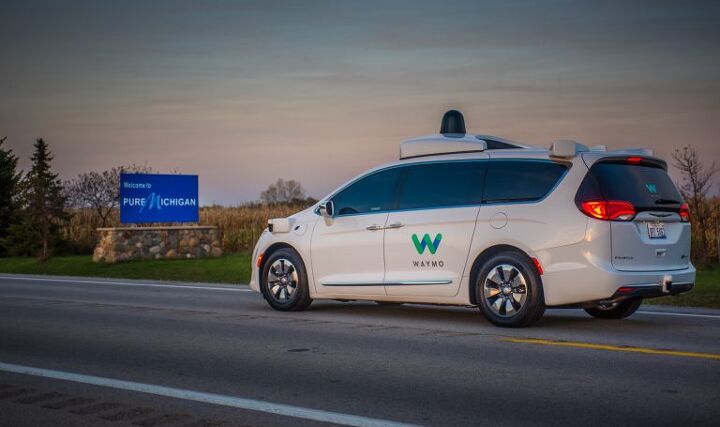
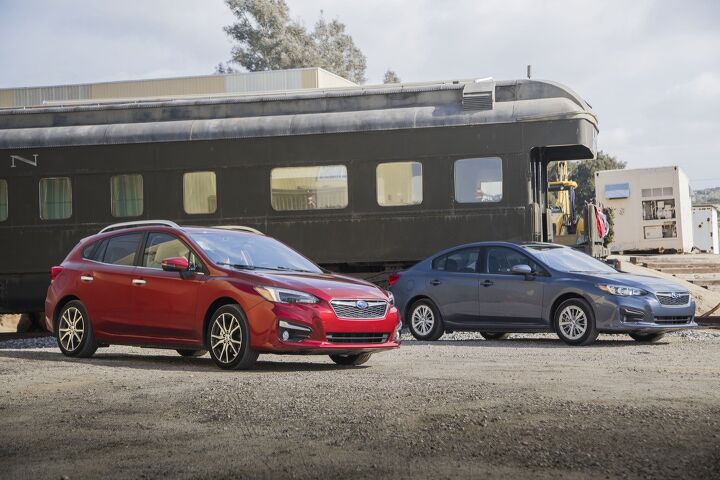

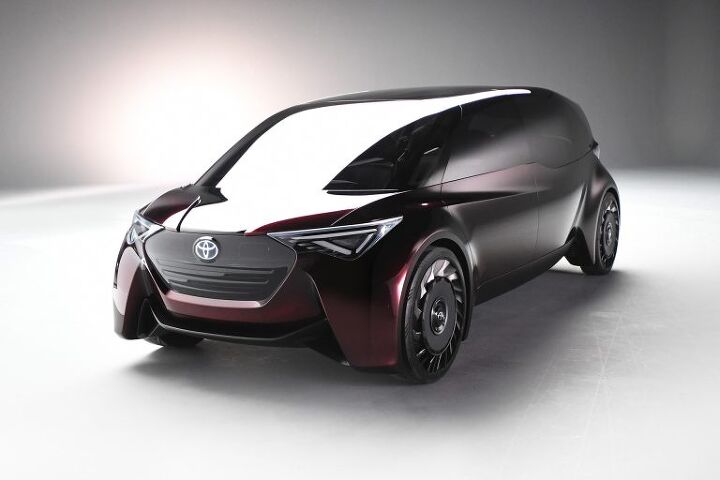


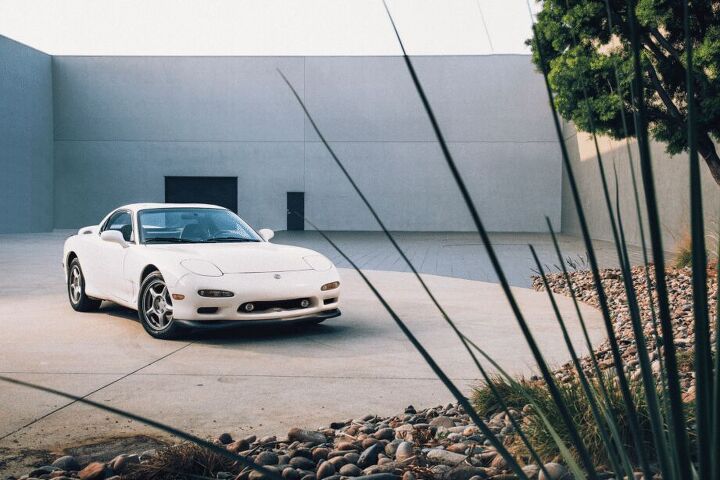







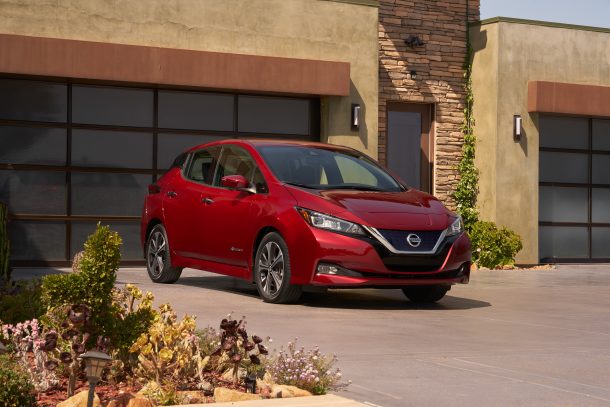


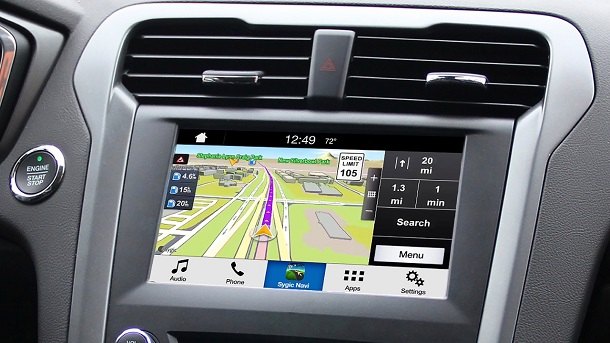




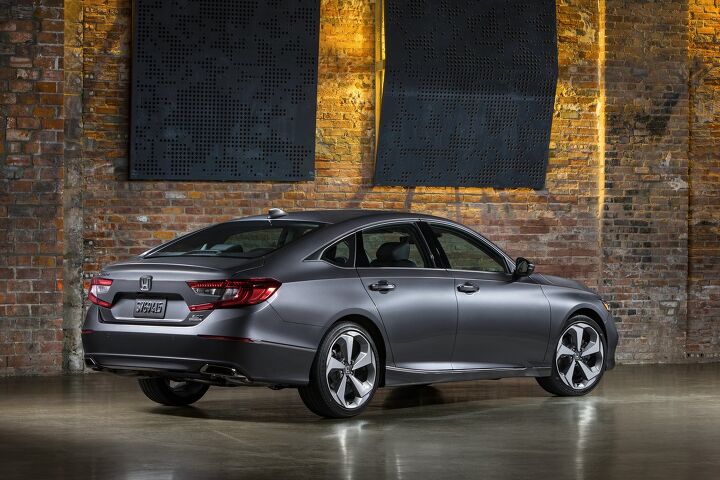
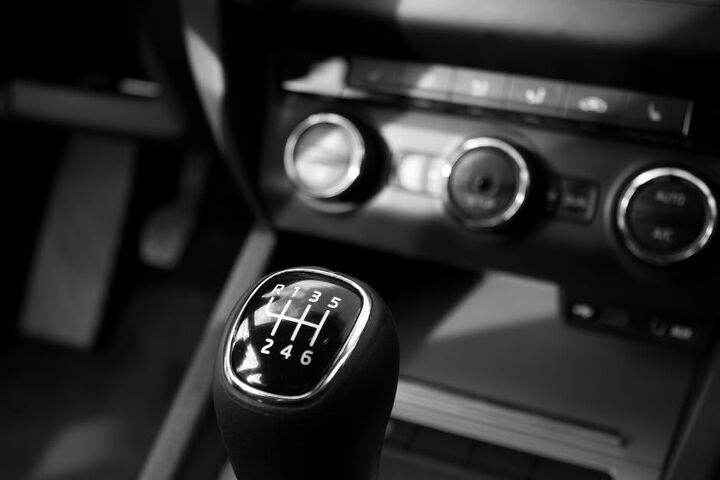
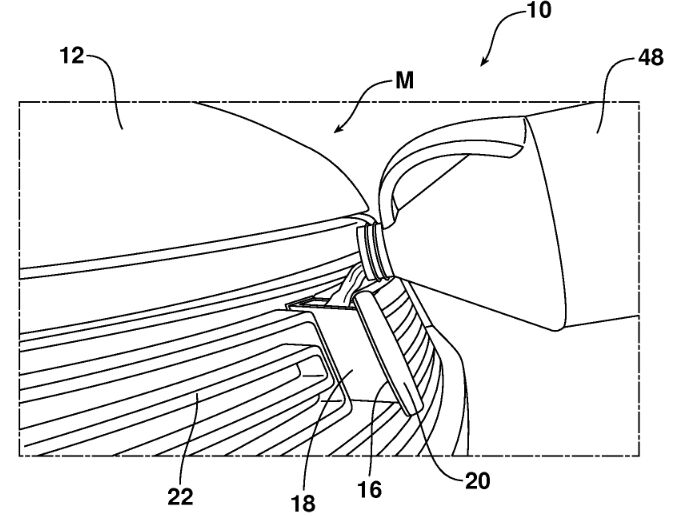

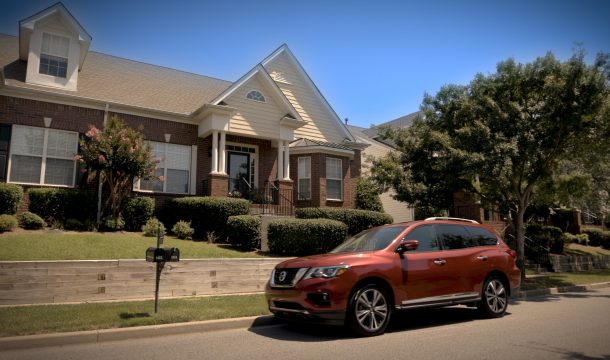



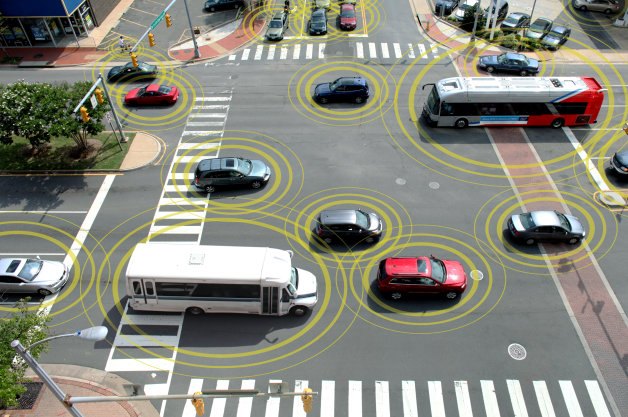




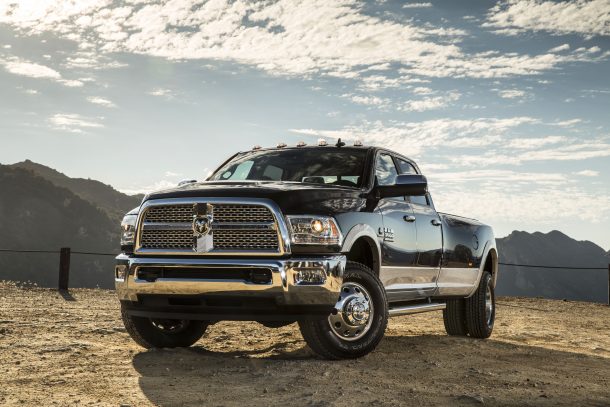


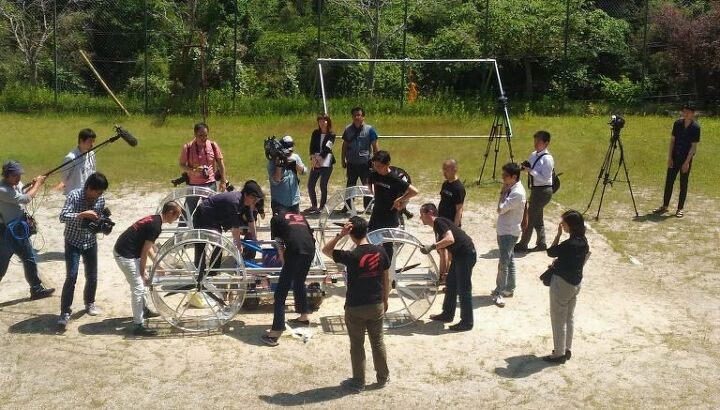



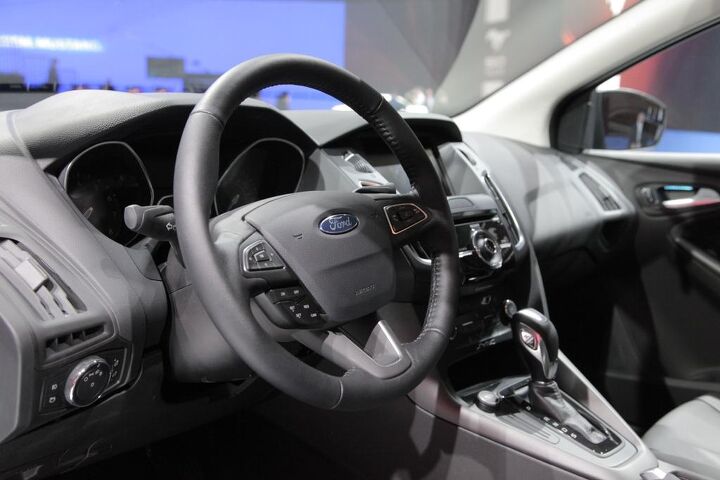
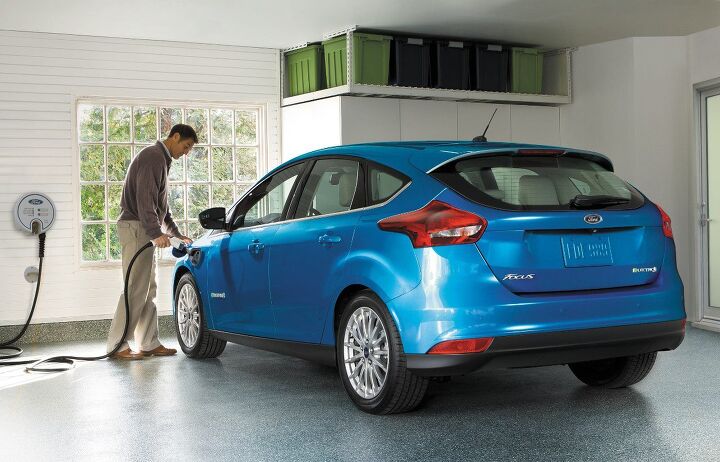



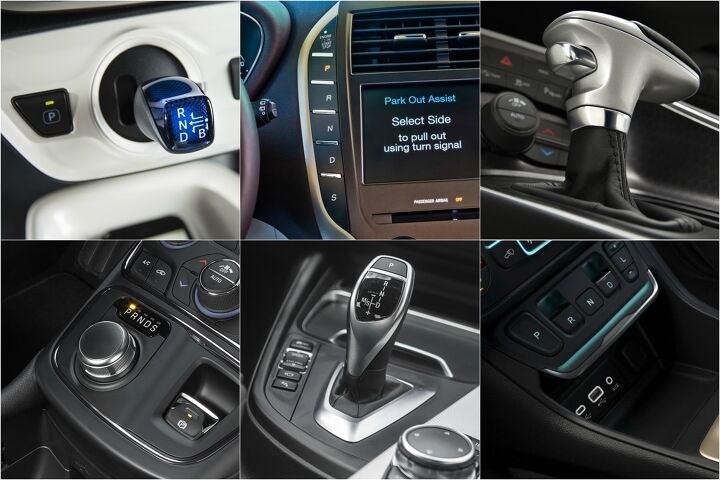

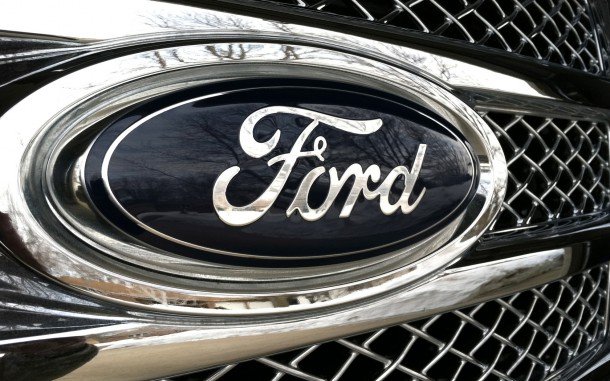


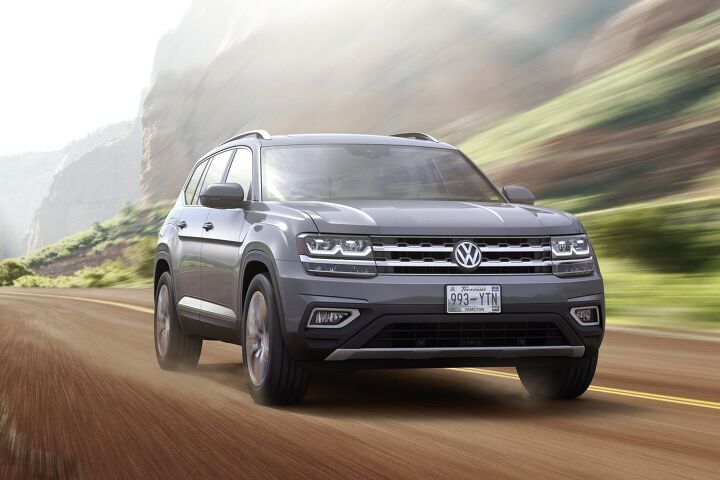

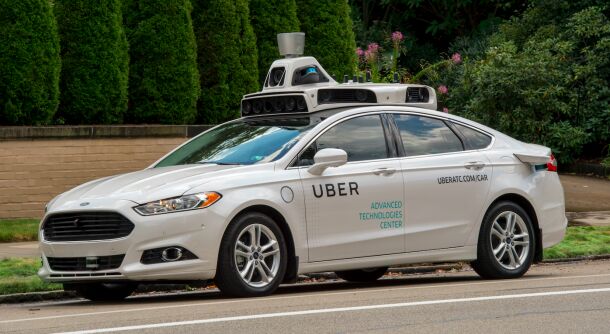












Recent Comments